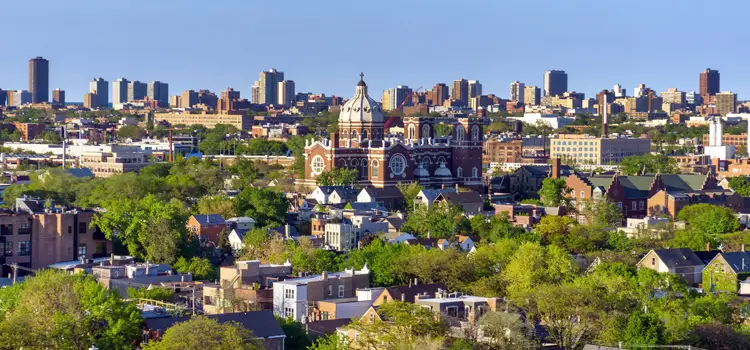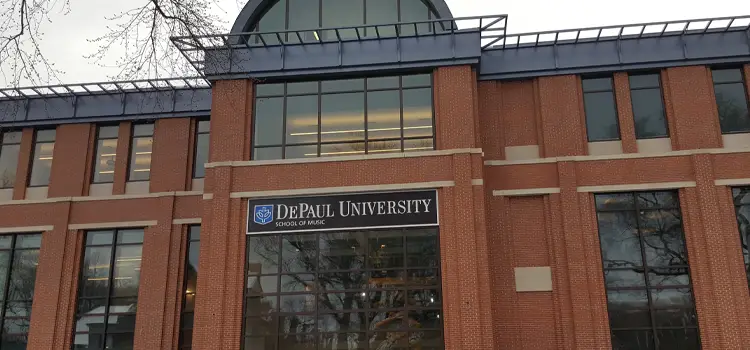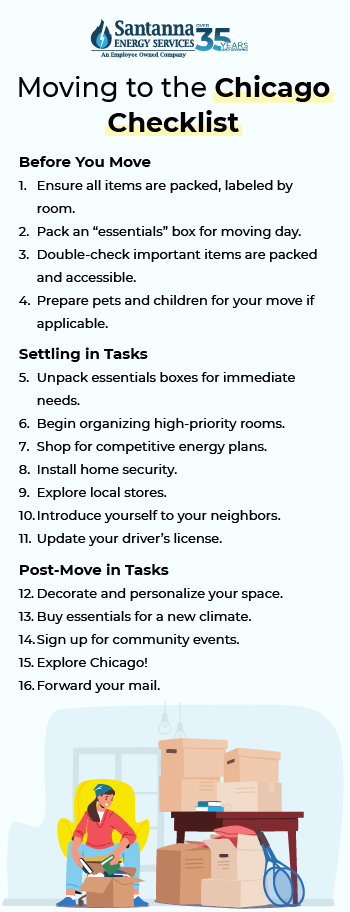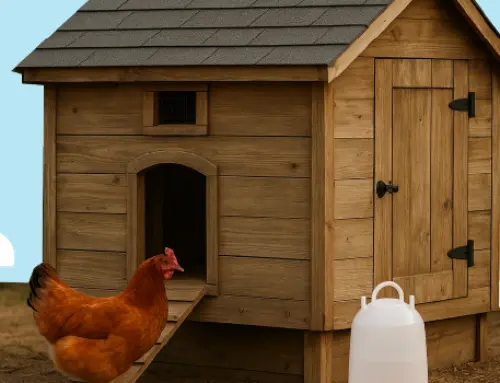Moving to Chicago: What to Know Before You Move + Checklist
by Jenna Mendez
21.7 min read

Considering moving to Chicago? This city is filled with vibrant neighborhoods, rich culture, and endless opportunities for work and play. With a diverse population and a strong sense of community, it’s no wonder why so many are choosing to call the Windy City home.
But what should you know before you make your move to Chicago? We’ve got you covered from cost, places to live, and where to get the Chicago classics, plus a comprehensive moving to Chicago checklist! Read on for the full scoop.
Things to know before moving to the Chicago area
Before packing your bags for the Chicago area, it’s helpful to understand a few key things about the city and its surroundings. Here are some of the top things you should know before moving to Chicago:
1. Chicago cost of living
As of 2024, the cost of living in Chicago is 14% higher than the national average. The average monthly rent is $2,334, and the average home price in Chicago is $350,000. The median household income in 2024 is $71,673.
The average mortgage rate for living in the Chicago area is 6.50%. Regarding Chicago’s cost of living with utilities, average monthly gas and electricity expenses total $157.25, and gas prices generally hover between $3.39 and $4 per gallon in the city center.
The cost of clothing in Chicago ranges from $32.03 for a pair of women’s slacks to $36.84 for a men’s shirt. When it comes to personal services, a haircut usually costs $33.92, while dry cleaning costs about $14.96. Looking for a night out at the movies? A movie ticket in Chicago costs around $17.75.
Though Chicago’s cost of living may be higher, the quality of life and opportunities to enjoy everything from world-class art to a robust job market make Chicago a rewarding place to call home.
2. Safest areas to live in Chicago

One of the most important things to know before moving to Chicago is which are the safest areas to live in. Chicago is a city of diverse neighborhoods, each with its own unique vibe and character. For those prioritizing safety when choosing a place to live, several areas stand out:
1. Edison Park
Edison Park is a family-friendly area with a suburban feel in Chicago’s quiet northwest. It features lush parks, excellent schools, and a warm, welcoming community. Edison Park is the best of both worlds, with city amenities like restaurants within walking distance and a small-town feel.
2. Lincoln Park
Lincoln Park offers luxury living with plenty of green spaces in the heart of the city. Lincoln Park features leafy streets, nearly 360-degree views of the city’s skyscrapers, and cultural attractions.
One of the biggest draws of this Chicago area is its FREE zoo! Lincoln Park Zoo offers free daily admission and hundreds of animals to learn about. Lincoln Park also offers high-end dining, top schools, and easy access to Lake Shore Drive for commuting around the city.
3. Lakeview
Lakeview has a vibrant, urban vibe with a strong sense of community. As one of the safest areas to live in Chicago, Lakeview is close to the iconic Wrigley Field, offering both lively sports action and peaceful lake access. Lakeview has easy access to public transportation, shopping, and excellent dining.
4. North Center
North Center is a quiet, family-friendly neighborhood with a suburban feel. If you’re looking to feel “old school Chicago,” this is the place for you. North Center is brimming with family-owned businesses, lovely parks, and excellent schools. This Chicago neighborhood is home to a vintage wooden lane bowling alley, an improv theater, and gastropubs.
5. Beverly
Beverly is a historic, charming neighborhood with a suburban atmosphere. Beverly is home to grand historic homes and a close-knit, vibrant community. Located on Chicago’s southwestern side, Beverly offers residents a peaceful retreat from the city’s hustle and bustle while still providing easy access to downtown.
In addition to being one of the safest areas to live in Chicago, according to Niche, Beverly is ranked as the best neighborhood in 2024 to buy a house in Chicago! We’re ready to make our move!
3. Education and top schools in Chicago
If you’re considering moving to Chicago, it might help to know that Chicago is consistently regarded for its educational opportunities. Here are some of the top schools in Chicago:
Payton College Preparatory High School – Known for its rigorous academic curriculum and high college placement rates, Payton College Prep also excels in fostering global awareness and innovative learning.
Northside College Preparatory High School – Celebrated for its emphasis on critical thinking and problem-solving, Northside offers advanced courses in a highly supportive and collaborative environment.
Young Magnet High School – A strong magnet school with top-tier academic and extracurricular programs, it’s well-regarded for preparing students for competitive colleges and careers.
Jones College Prep High School – Located in the heart of Chicago, Jones College Prep offers excellent academic programs and real-world learning experiences, preparing students for urban and global challenges.
Lane Technical High School – Known as “Lane Tech,” this school provides a comprehensive curriculum with a strong focus on STEM and technology, preparing students for both college and career pathways.
4. Top colleges and universities in Chicago

In addition to top-rated schools for secondary education, Chicago is home to world-class institutes for higher education. If you’re moving to Chicago, you’ll have your pick of schools for college. Here are some of the best in the Chicago area:
University of Chicago – Known for its intellectual rigor and influential research, UChicago is a world-renowned institution with a core curriculum emphasizing critical thinking across diverse fields, from economics to political science and beyond.
DePaul University – As the nation’s largest Catholic university, DePaul offers a practical, hands-on approach to education with strong programs in business, communications, and the arts, along with a commitment to community engagement.
Northwestern University – Located in nearby Evanston, Northwestern combines academic excellence with a beautiful campus and a strong emphasis on research, with top programs in journalism, law, business, and engineering.
Loyola University Chicago – Loyola emphasizes values-based education and social justice, with well-regarded programs in health sciences, law, and environmental studies across two vibrant Chicago campuses.
University of Illinois Chicago – Known for its diverse student body, strong academic programs, and commitment to innovation, UIC offers over 200 undergraduate, graduate, and professional degrees.
5. Property taxes, average rent, and housing prices in Chicago
Illinois has one of the highest property taxes in the country. The average rate is 2.07%, more than double the national average.
For example, if you’re in Illinois, based on an assessed home value of $500,000, your average property tax would be $11,150 or 2.23% of the assessed home value.
Average rent and housing
If you’re moving to Chicago and planning on renting a property, rent prices vary depending on several factors, such as the size and location. Expect to pay around $1,845 a month to rent a 1-bedroom apartment in Chicago in 2024. The average rent for a 2-bedroom apartment is $2,332, and a 3-bedroom is around $2,811.
According to Realtor.com, the median listing home price in 2024 is $350,000 and priced at $262 per square foot.
Affluent neighborhoods like River West, Streeterville, and Goose Island may have higher rental prices because of their prime locations, upscale amenities, and proximity to downtown.
How to claim tax credits for new residents in Chicago
If you’re looking for a break on property taxes, Illinois has a tax credit you can claim for your housing costs, including for homes in the Chicago area.
The Illinois Property Tax Credit allows you to claim a credit of 5% of the Illinois Property Tax you paid on your primary residence. You must own and live in the residence to qualify. Starting January 1, 2017, taxpayers with a federal AGI over $500,000 (married filing jointly) or $250,000 (all others) are not eligible for the credit.
6. Public transportation options in Chicago
If you’re moving to Chicago, knowing your transportation options is key. In the heart of one of the biggest cities in the U.S., your transportation options are abundant. Here are some of the most common transportation options in Chicago:
“L” Train
Taking the train is the best way to navigate the city, with eight lines connecting via subway, elevated, and street-level routes. When this article was written, there were over 145 stations in the city of Chicago with the Red and Blue lines operating 24/7. If the “L” is going to be your main source of transportation, consider purchasing a Ventra Card for easy payments on trains and buses.
Metra Rail
If you plan to visit the Chicagoland suburbs after you move to Chicago, the Metra rail is a great transportation option! Metra connects downtown Chicago to the suburbs with 11 lines and extends to popular suburbs like Aurora, University Park, and Evanston.
Buses
The bus connections in Chicago span over 100 routes, some operating 24/7, and cover the city and major attractions. Managed by the Chicago Transit Authority (CTA), these routes offer convenient and affordable access to key areas, including neighborhoods, shopping districts, and popular destinations like Millennium Park, Navy Pier, and the Art Institute of Chicago.
Water Taxi
Water taxi transportation is an exciting and fun option, and it is seasonal transportation from May to October. Chicago water taxis connect key tourist sites like Chinatown, Willis Tower, the Riverwalk, and Michigan Avenue, providing both locals and visitors with a scenic and convenient alternative to traditional transit.
Most Chicago water taxis make the trek through the Chicago River. Even if you’re not a fan of water travel as your main transportation option, if you’re moving to Chicago, taking a water taxi ride is a great way to see the city!
Biking in Chicago
Faster than walking, biking in Chicago is a favorable transportation option with over 200 miles of bike lanes. Even if you have your own bike, consider taking advantage of the Divvy Bike sharing system. There are over 5,000 bikes and 500+ stations available 24/7 in the Chicago area.
7. Chicago’s Climate and Weather
If you’re thinking about moving to Chicago, the weather is one of the biggest things you need to know about.
In Chicago, the summers are warm, humid, and wet; the winters are freezing, snowy, and windy; and it is partly cloudy year-round. Over the year, the temperature typically varies from 22°F to 83°F. The Chicago suburbs typically experience warmer temperatures than the city throughout the year. The city, especially neighborhoods close to Lake Michigan, experiences colder wind chill because of the “lake effect”.
The warm season lasts 3.6 months, typically from June to September, with an average daily high temperature above 73°F. The hottest month of the year in Chicago is July, with an average high of 82°F and a low of 70°F, but days above 85°F aren’t uncommon.
The cold season typically lasts 3.2 months, from December to March, when temperatures typically stay below 43°F. January brings the coldest weather, with an average low of 22°F, but keep in mind, weather below freezing isn’t uncommon and frequent wind chill makes winter days bitter.
8. Sports EVERYWHERE
For sports fans moving to Chicago, you’re in for a treat! Sports are extremely abundant in the Chicago area. Here’s a breakdown of the sports experience:
- Chicago Cubs (MLB): The Cubs, one of Major League Baseball’s oldest teams, play their home games at the iconic Wrigley Field on Chicago’s North Side. Known for their devoted fanbase and a long history of memorable players, the Cubs famously ended a 108-year drought when they won the World Series in 2016.
- Chicago White Sox (MLB): The White Sox, based on Chicago’s South Side, play at Guaranteed Rate Field and have a passionate fanbase. Known for their fierce rivalry with the Cubs, the White Sox claimed the World Series title in 2005, ending an 88-year championship drought.
- Chicago Bears (NFL): Established in 1920, the Bears are one of the oldest franchises in the NFL and play at Soldier Field. With a storied history, including legendary players like Walter Payton and Mike Ditka, the Bears are known for their hard-hitting defenses.
- Chicago Bulls (NBA): The Bulls are probably most associated with former shooting guard Michael Jordan, who led the team to six NBA championships (1991–93, 1996–98). The Bulls remain a central part of Chicago’s sports culture today.
- Chicago Blackhawks (NHL): Before the NHL’s 1967 expansion, the Blackhawks were part of the league’s “Original Six.” Their legacy includes six Stanley Cup titles.
9. Chicago’s food is a world favorite

Chicago is known for iconic food that many cities in the U.S. try to copy, but there’s nothing like experiencing the real thing. If you’re moving to Chicago, here’s the food you need to try:
Deep-Dish Pizza: An iconic Chicago staple, often served by pizzerias like Lou Malnati’s and Giordano’s, Chicago’s pizza is known for its thick, buttery crust and layers of cheese and toppings.
Chicago-Style Hot Dog: A hot dog “dragged through the garden,” loaded with mustard, onions, relish, a dill pickle spear, tomatoes, and sport peppers—no ketchup allowed!
Italian Beef Sandwich: Thinly sliced, seasoned beef piled onto a roll, often with giardiniera (pickled peppers), from spots like Portillo’s and Al’s Beef.
Chicago Mix Popcorn: A delicious blend of caramel and cheddar popcorn, made famous by Garrett Popcorn Shops.
Jibarito Sandwich: A Puerto Rican-inspired sandwich with steak, garlic, and cheese, served between fried plantains instead of bread—a Chicago creation.
Best restaurants to take kids in Chicago
If you’re looking for the best restaurants to take kids in Chicago, you’ve come to the right place. Here are our picks for family-friendly restaurants in the Chicago area:
- Lou Malnati’s Pizzeria (Various Locations): Lou Malnati’s is a Chicago staple known for its deep-dish pizza, a must-try experience for families visiting or moving to Chicago. Since deep-dish pizza takes a minimum of 45 minutes to cook, having long conversions and family time while your meal cooks is a great way to spend an evening. And trust us, once you’re ready to chow down, your kids will love the iconic cheese pull from your deep-dish pizza.
- R.J. Grunts (Lincoln Park): R.J. Grunts offers a casual, old-school vibe with a kids’ menu and a famous salad bar that offers a wide range of options. They are known for serving vegetarian dishes, kid-friendly sliders, and a big variety of milkshake flavors, making R.J.’s one of the best restaurants to take kids in Chicago.
- Wildberry Pancakes & Cafe (Millennium Park): Wildberry is a popular breakfast and brunch spot that serves pancakes, waffles, and more. Featuring a fantastic view of Millennium Park with big windows, it’s a great spot to watch the city go by.
- Parlor Pizza Bar (West Loop and Wicker Park): Known for pizzas and a vibrant, spacious setting with an outdoor patio, Parlor Pizza Bar features signature pizzas, s’mores dessert pizza, and soft-serve ice cream.
- Chicago Diner (Logan Square and Lakeview): Known for its vegetarian and vegan options, this spot offers kid-friendly classics like milkshakes, burgers, and breakfast all day. This restaurant features a colorful, casual atmosphere with a fun menu that caters to picky eaters and food allergies.
10. Typical Chicago lifestyle
One of the most important things you should know before moving to Chicago is what the Chicago lifestyle is like! Let’s break it down:
Chicago is filled with neighbor pride. Each neighborhood has its own identity, and residents love supporting local businesses, festivals, and communities. Chicago also has an active outdoor scene. From running along Lake Michigan to biking and participating in local sports leagues, Chicagoans embrace an active lifestyle year-round.
Chicago offers a balance between city energy and Midwest friendliness, with a focus on work-life balance and accessible amenities. Chicago’s lifestyle adjusts to each season, with summers filled with outdoor festivals and winters bringing indoor activities, cozy gatherings, and sporting events.
11. Chicago’s crime rates
Chicago averages a crime rate of 37 per 1,000 residents. Crime rates vary widely across neighborhoods. Areas like Lincoln Park, Edison Park, and Lakeview have lower crime rates, while some neighborhoods face higher crime levels. Property crime (theft, burglary) is generally higher than violent crime in many parts of the city.
Luckily, the city has active neighborhood watches, community policing programs, and safety initiatives to improve security. The Loop and other popular areas maintain a noticeable police presence, especially in tourist zones and business districts. Crime is low once you get into the heart of downtown and around spots like Michigan Ave, Millenium Park, and Lake Shore.
12. Activities in Chicago

Chicago is a city brimming with activities for all interests, from iconic landmarks to hidden local gems. Whether you’re a fan of arts and culture, outdoor adventures, or diverse culinary experiences, Chicago offers endless ways to stay entertained. Here are some of our favorite Chicago attractions you should know about if you’re moving to Chicago:
- Museum Visits: The Art Institute of Chicago, Field Museum, and Museum of Science and Industry offer world-class exhibits.
- Navy Pier: This is a top attraction for family-friendly fun, dining, shopping, and spectacular lake views.
- Shopping on the Magnificent Mile: This famous strip along Michigan Avenue offers high-end and local shopping experiences.
- Chicago Riverwalk: Enjoy walking, dining, or kayaking while taking in city views along the Chicago River.
- Millennium Park and The Bean: A visit to Chicago isn’t complete without stopping here to take in iconic public art, live events, or just some outdoor relaxation in the heart of the city.
13. Outdoor parks and activities
Chicago boasts a wide range of outdoor attractions perfect for both locals and visitors. Lincoln Park, a sprawling green space along Lake Michigan, offers a free zoo, lush gardens, and scenic trails, making it a favorite spot for nature lovers.
In the heart of the city, Grant Park—affectionately called “Chicago’s Front Yard”—features the iconic Buckingham Fountain and serves as the venue for major events like Lollapalooza. For those who enjoy active pursuits, the Lakefront Trail stretches 18 miles along the shoreline, ideal for biking, running, and taking in stunning views. Maggie Daley Park in downtown offers family-friendly fun with a climbing wall, an ice skating ribbon in winter, and imaginative playgrounds for all ages.
14. Pop culture in Chicago
A fun tidbit you should know if you’re moving to Chicago is that this vibrant city has been the home to various classic films and television shows. Films like The Dark Knight, Ferris Bueller’s Day Off, and Home Alone have iconic scenes shot in the city. Popular shows like Chicago Med, Chicago PD, and Chicago Fire are set in and often filmed around the city (and often have open casting calls for local Chicago residents).
Chicago is known for its comedy clubs, particularly The Second City, where many famous comedians got their start. Chicago is known for its contributions to jazz and blues, with venues like Kingston Mines and Green Mill keeping the music culture alive.
15. More to explore in the suburbs
While the city has so much to explore, if you’re looking to escape city life once in a while for more fun, don’t dismiss the Chicagoland suburbs! Here are some of our favorites that are worth visiting:
- Oak Park: Known for its Frank Lloyd Wright homes and charming downtown, just west of Chicago.
- Evanston: A lakeside college town home to Northwestern University, with boutique shopping and beach access.
- Naperville: A family-friendly suburb with top schools, a riverwalk, and a historic downtown area.
- Schaumburg: Known for the large Woodfield Mall, offering extensive shopping, dining, and entertainment.
- Highland Park: A North Shore suburb with Ravinia Festival, an outdoor music venue, and scenic lakefront parks.
For more fun activities in the Chicago suburbs, visit our blog on the best neighborhoods to live in outside of Chicago.
16. Booming industries in Chicago
Chicago is a major economic hub with a diverse range of thriving industries that fuel its growth and innovation. Here are some of the most important to know if you’re moving to Chicago:
Finance: Chicago is a global financial hub, known for its significant influence in banking, investment, and trading. Institutions like the Chicago Board of Trade (CBOT) and the Chicago Mercantile Exchange (CME), two of the world’s largest futures and options exchanges, call Chicago home. Job opportunities include financial analysts, investment banking, and risk management.
Technology: Chicago has emerged as a growing tech center, with a booming startup scene and major tech companies establishing regional offices. Companies like Google, Salesforce, and Microsoft have a strong presence in the city, alongside local tech startups.
Manufacturing: Chicago has a rich history in manufacturing and continues to be a leader in the sector. The region is known for producing machinery, food products, electronics, and chemicals. Chicago’s manufacturing industry offers a variety of positions, from industrial engineers to skilled trades and production managers.
Healthcare: Chicago is a leading hub for healthcare, with a strong emphasis on medical research, healthcare services, and pharmaceuticals. The city is home to top-tier hospitals and research centers like Northwestern Memorial Hospital, Rush University Medical Center, and the University of Chicago Medical Center.
Ready to move? Here’s your moving to Chicago checklist
Have we convinced you to make the move to Chicago? If so, here’s your complete moving to Chicago checklist:

Before you move
- Complete Packing the Day Before: Ensure all items are packed, labeled by room, and organized for easy unpacking.
- Pack Essentials Box for Moving Day: Include essentials like toiletries, a change of clothes, medications, important documents, and snacks.
- Double-Check for Important Items: Make sure passports, IDs, and financial documents are safely packed and accessible.
- Plan Travel: Whether flying, driving, or taking a train, make travel arrangements for an efficient move.
- Prepare Pets or Children, If Applicable: Have necessary pet carriers, snacks, entertainment, and essentials ready for the journey.
Settling in tasks
- Unpacking: Start with Essentials: Unpack essentials boxes for immediate needs like toiletries, kitchen supplies, and bedding.
- Organize Room by Room: Begin with high-priority rooms like the kitchen and bedroom, gradually unpacking each area.
- Shop for a Competitive Energy Plan: It’s never too early to switch your gas and electricity provider! Start by comparing energy providers in the Chicago area that have plans that fit your energy needs and lifestyle.
- Install Home Security (if needed): If safety is a concern, consider setting up a home security system or contacting neighborhood safety groups.
- Explore Local Stores and Services: Find grocery stores, pharmacies, and other nearby essentials for day-to-day needs.
- Introduce Yourself to Neighbors: Building community connections can provide valuable tips and support as you settle in.
- Update Driver’s License and Vehicle Registration: Illinois requires new residents to update their driver’s licenses and register their vehicles within 90 days. You can complete both tasks on the Illinois Secretary of State/DMV website. Vehicles four years or older require a gas emission test every two years.
Post-move tasks
- Decorate and Personalize Your Space: Hang pictures, set up your workspace, and add décor to make your home feel cozy and inviting.
- Buy Essentials for the New Climate: Chicago’s winters are harsh, so consider investing in quality winter gear, heating equipment, and indoor comfort items.
- Engage in Community Events and Meetups: Look for events on Meetup, join local clubs, or explore neighborhood associations to meet new people.
- Check Out Chicago’s Attractions and Activities: Visit key landmarks like Millennium Park, the Chicago Riverwalk, and the Art Institute.
- Forward your Mail: Visit the United States Postal Service (USPS) website to forward your mail to your new address. Use this checklist to make sure you update your address everywhere.
Gifts for someone moving to Chicago
Have a loved one that’s moving to Chicago in the near future? Check out our list of gifts for someone moving to Chicago:
- Books About Chicago: A guidebook about Chicago’s history and architecture, or a food guide to the city’s best restaurants and hidden gems.
- Warm Winter Gear: Chicago winters are intense, so a cozy scarf, warm gloves, or a thick beanie will be appreciated.
- Deep-Dish Pizza Kit: A DIY deep-dish pizza kit from a famous Chicago pizzeria, like Lou Malnati’s, so they can taste Chicago right at home.
- Gift Card to a Famous Chicago Restaurant: A dining experience at a renowned restaurant like Girl & the Goat, Alinea, or Lou Malnati’s for a taste of Chicago’s food scene.
- Smart Home Gadget: A smart thermostat (like a Nest) to help them keep their apartment warm and energy-efficient during winter.
- Ventra Card: A pre-loaded Ventra Card for Chicago’s CTA trains and buses, making it easier to navigate the city.
- Tickets to a Chicago Sports Game: A pair of tickets to see a Chicago Bulls, Cubs, White Sox, Bears, or Blackhawks game for an authentic Chicago sports experience.
- Museum Membership or Pass: A membership or day pass to one of Chicago’s world-class museums like the Art Institute of Chicago, Field Museum, or Shedd Aquarium.
- Chicago Theatre Tickets: A gift card or tickets to a show at one of Chicago’s famous theaters, like The Second City, Chicago Theatre, or Broadway in Chicago.
Moving to Chicago is an exciting adventure, and with the right planning, it can be a smooth and enjoyable transition. Take time to research your new neighborhood, explore the city’s unique communities, and embrace opportunities to get involved!
And when you’re ready to make the move, don’t forget to set up your essential utilities. With over 35 years of experience serving the Chicago area, Santanna is here to meet your energy needs and help you settle comfortably into your new home.
We’re here to serve our Illinois customers by proudly providing easy home electricity and gas plans for over 35 years in Chicagoland! We’re proud to offer a wide range of renewable energy solutions and products tailored to meet the unique needs of our Prairie State customers. Our mission is to provide innovative and cost-effective energy solutions that will help our customers achieve their energy goals and help the environment along the way.
Jenna Mendez is a Midwest native with lifelong roots in Illinois and time spent in Ohio during college, giving her a deep understanding of the Midwest region’s people, climate, and energy needs. She brings firsthand experience and local insight to topics that matter to Midwest homeowners, especially energy efficiency, sustainability, and home living. Jenna specializes in writing about eco-friendly living, all things Midwest, renewable energy, and practical ways to reduce energy costs. Jenna brings a trusted, and local hometown voice to every article she writes, helping readers live well, and sustainably, right where they are.







